I got excited when I saw the first pile of poop.
Smack in the middle of the trail, so fresh it was still glistening, it looked more like a mound of fruit-salad vomit than excrement. I peered into the forest, looking left and right through the thick undergrowth, as cars sped past on the road 200 meters behind me.
No sign of the cassowary. But I was close.
Cassowaries are incredible birds. They’re famed for their size, bizarre looks, and claws that can maim with a single kick. Likening them to dinosaurs is not unreasonable. But cassowaries — and their massive piles of poop — are also incredibly important to the rainforest ecosystems where they live.
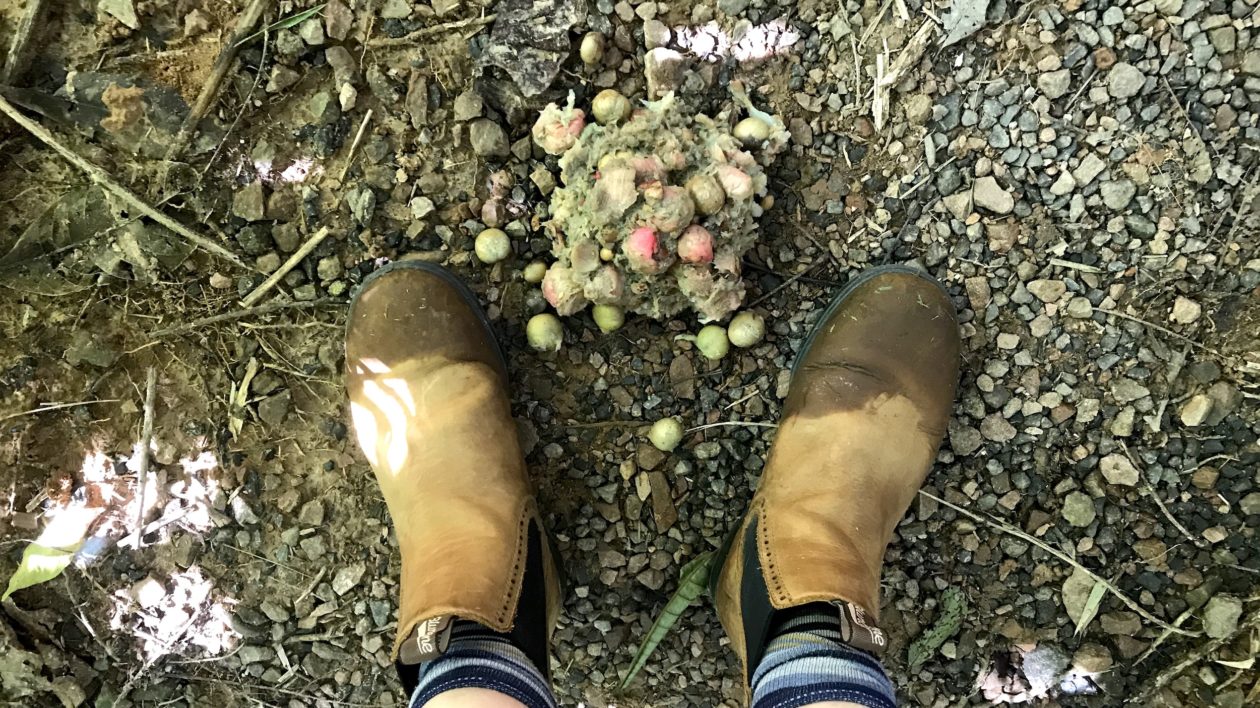
A Mission in Mission Beach
My cassowary quest began in Mission Beach, a sleepy little tourist town on the northeast coast of Australia. I was on my first vacation in nearly 10 months, and everyone said that if you want to see a wild cassowary, start here.
Stepping over the poo pile, I continue hiking. It’s a strange feeling, searching for a bird that can kill you. At first, my birding muscle-memory takes over: walking slowly, looking upwards, scanning for movement. I’m relaxed and happy, strolling down the trail.
And then with a jolt I remember that cassowaries aren’t in the canopy. They’re at ground level. They’re bigger than me. They could slice me open with a single kick, if provoked. They have a reputation for being exceedingly curious. And they often associate people with food, which is why the picnic area at the trailhead had a large wooden fence around the tables.
At this point, I start turning around every few meters to check behind me. Just in case.
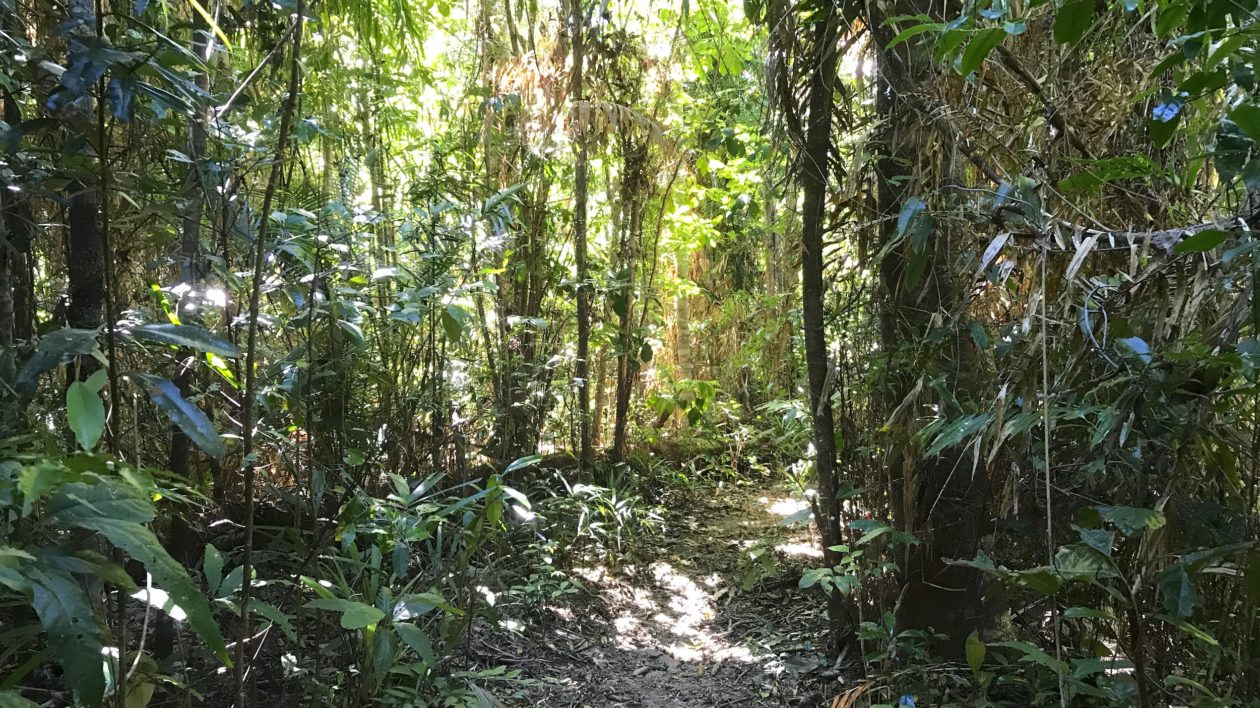
Australia’s only cassowary species, the southern cassowary, inhabits the tropical rainforests of far northern Queensland. The same species is also found in the southern lowlands of New Guinea, because the two land masses were joined by a land bridge until about 12,000 years ago. New Guinea has two additional cassowary species: the dwarf cassowary in the island’s central mountain range and the northern cassowary in the northern lowlands.
The southern cassowary is the largest of the three species, averaging 5 to 6 feet tall and between 120 and 165 pounds in weight. Females are much larger than males and have a longer, brighter wattle. Both sexes sport lurid blue and pink skin on their throats, and a tall, hard head crest, called a casque. While we’re not entirely sure why cassowaries have casques, research indicates that it may help the birds “hear” low-frequency sounds made by other cassowaries.
When it comes to parenting, cassowary males take on all of the responsibilities. Males build the nest and then go without food and water for about 50 days as they incubate the eggs. Once the chicks hatch, the males watch over the group protectively for between 8 and 18 months. (The collective noun for a group of cassowaries is a “dash,” as in “a dash of cassowary,” which sounds more like a grim survivalist cooking recipe than a group of birds.)
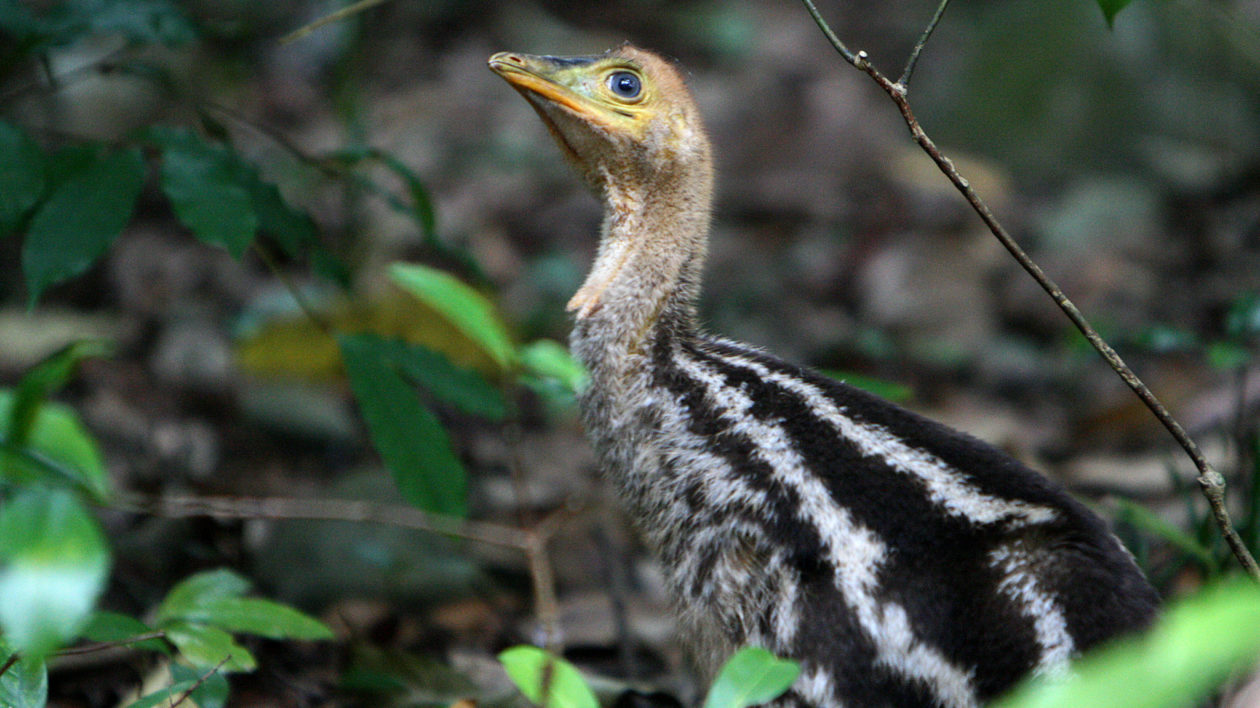
The Frugivore and the Forest
I keep hiking, seeing very little until my boot squishes down into another, older poo pile. Two meters away, another poop, this one dribbled out along the trail in small squirts. Perhaps diarrhea is normal when your entire diet is fruit? An adult cassowary eats hundreds rainforest fruits each day, which results in quite a lot of poop.
After the third unfortunate squish, I started counting. Four. Then five, six, and seven all in a row. Eight. And then I find it — the pooping grounds. Along the top of the ridge the forest floor is a mass of cassowary excrement; I count an additional 25 piles from a stationary vantage point. Small, pinkish-red fruits litter the ground, all fallen from a single tree. And then I find a perfect cassowary track, pressed deep into the mud, the scales on its skin visible like a giant avian fingerprint.
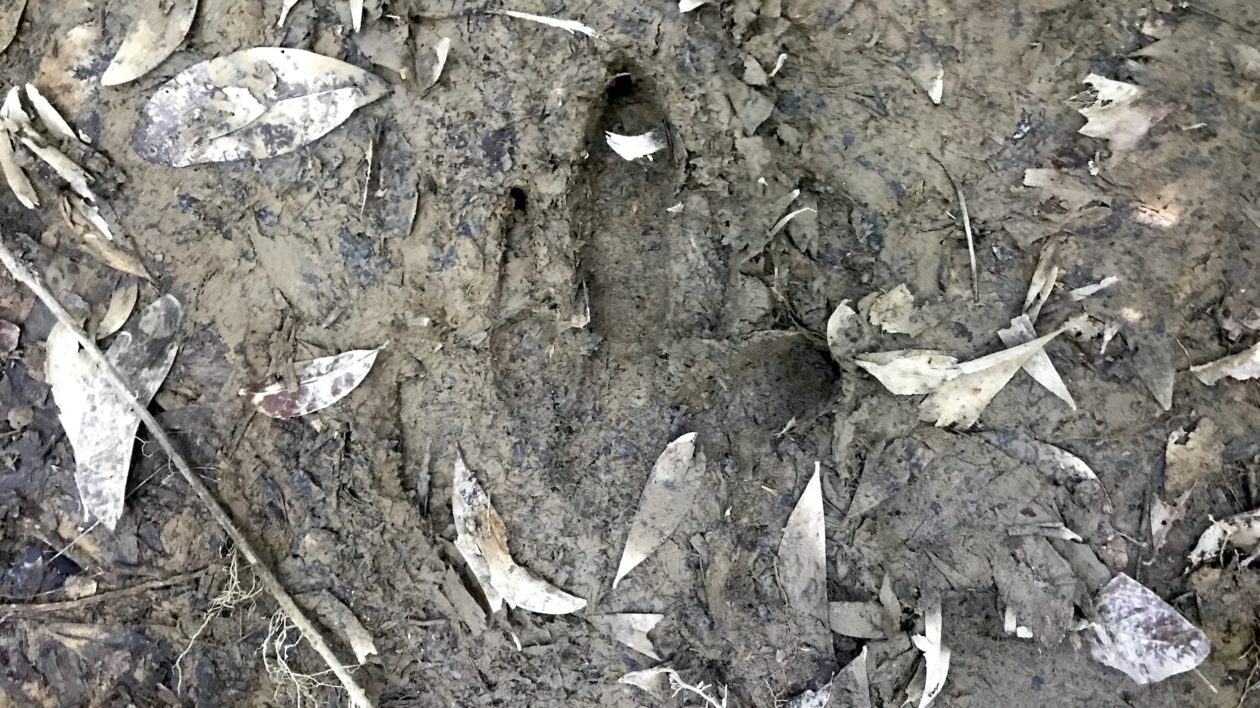
Every pile of this mushy, mouldy poop is precious.
Cassowaries feed on the fruits of more than 230 plant species, and once their digestion is done they scatter those seeds across the forest. After gulping down a gut full of fruits, the average cassowary walks several hundreds of meters before defecating the partially digested seeds out 3 to 4 hours later. Scientists discovered this after they inserted tiny radio transmitters inside cassowary food. (They also discovered that cassowary sometimes re-ingest their own poop, which must have made for some interesting tracking data.)
The cassowary’s digestive process helps kick-start germination by defleshing the seed and “planting” it in a ready-made pile of fertilizer. Research shows that, for some plant species, cassowary ingestion increases the probability that a seed will germinate and speeds up the time it takes to germinate, too. In a spectacular example of coevolution, the violet, fist-sized fruit of the cassowary plum tree are so large that only cassowary can eat and disperse them.
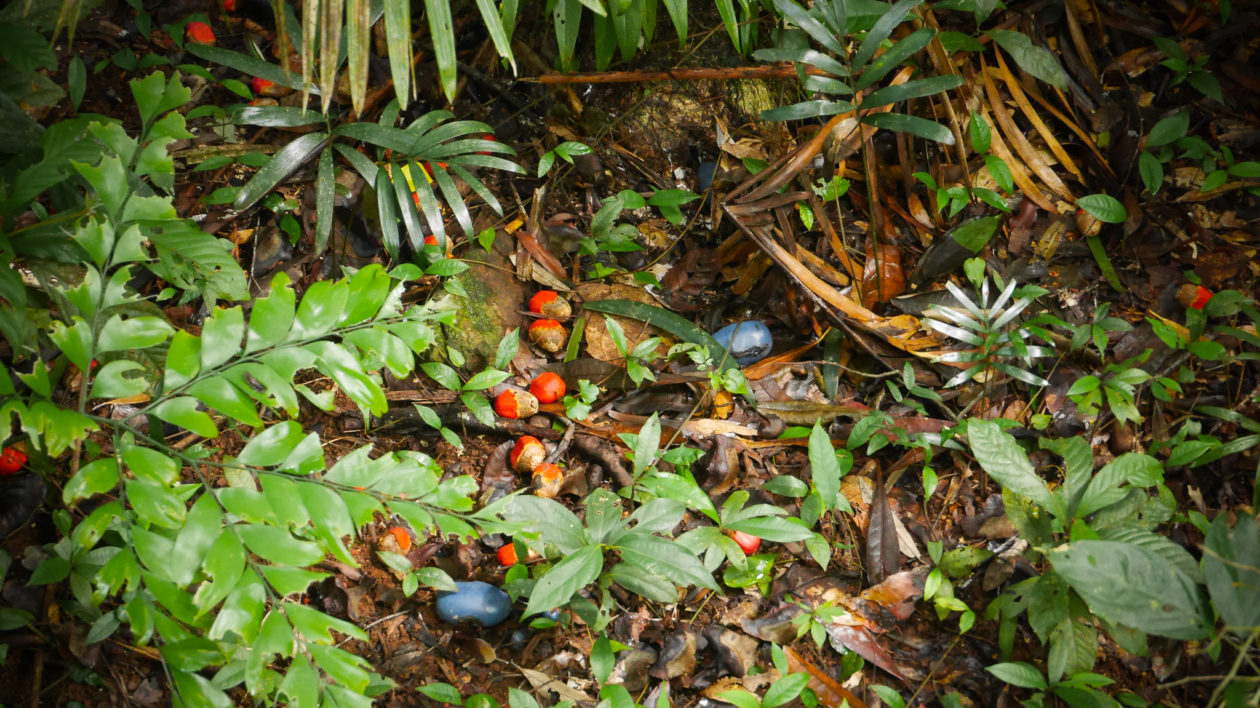
A Dangerous Road Ahead
Australia’s southern cassowaries are endangered, with an estimated 4,000 to 4,400 cassowaries remaining in the wild. These birds live in a highly fragmented landscape. Their rainforest habitat is already a remnant of the ancient past, when Australia’s climate was much more tropical. As the continent dried, the forest retreated. And then European settlers appeared, converting lowland forests into sugarcane fields, banana plantations and housing developments.
Most of the cassowary’s remaining habitat is now restricted to the coastal mountains, which aren’t suitable for agriculture, and the few places where the forest runs with little interruption down to the coast, including Mission Beach.
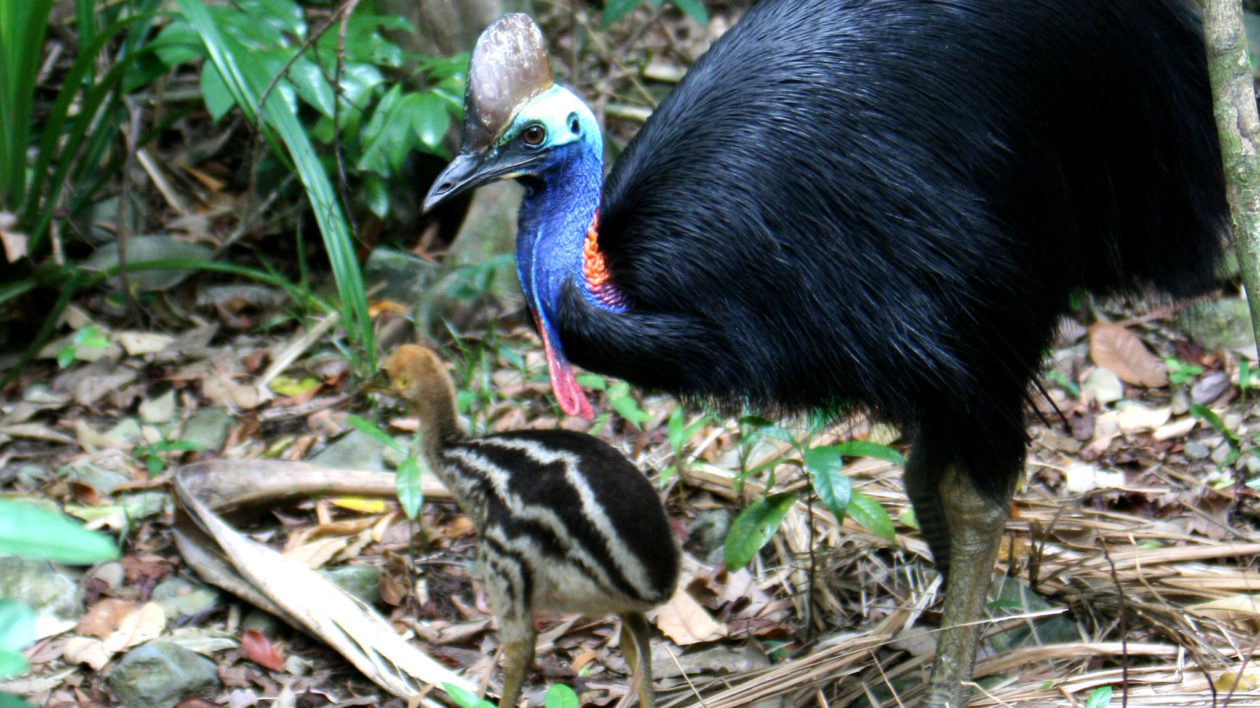
Habitat loss works slowly, but other threats are more immediate. Roads and dogs are deadly for cassowaries, with dozens of birds killed each year. Just a few weeks before our trip, a famous male from another tourist town, nicknamed Elvis, lost his final chick to a vehicle strike. All four of his chicks were killed on the same stretch of road in the space of 6 months.
Cassowaries are a cryptic, hard-to-count species, so it’s likely that there will be a delay between any further population decline and when conservationists realize that something’s wrong.
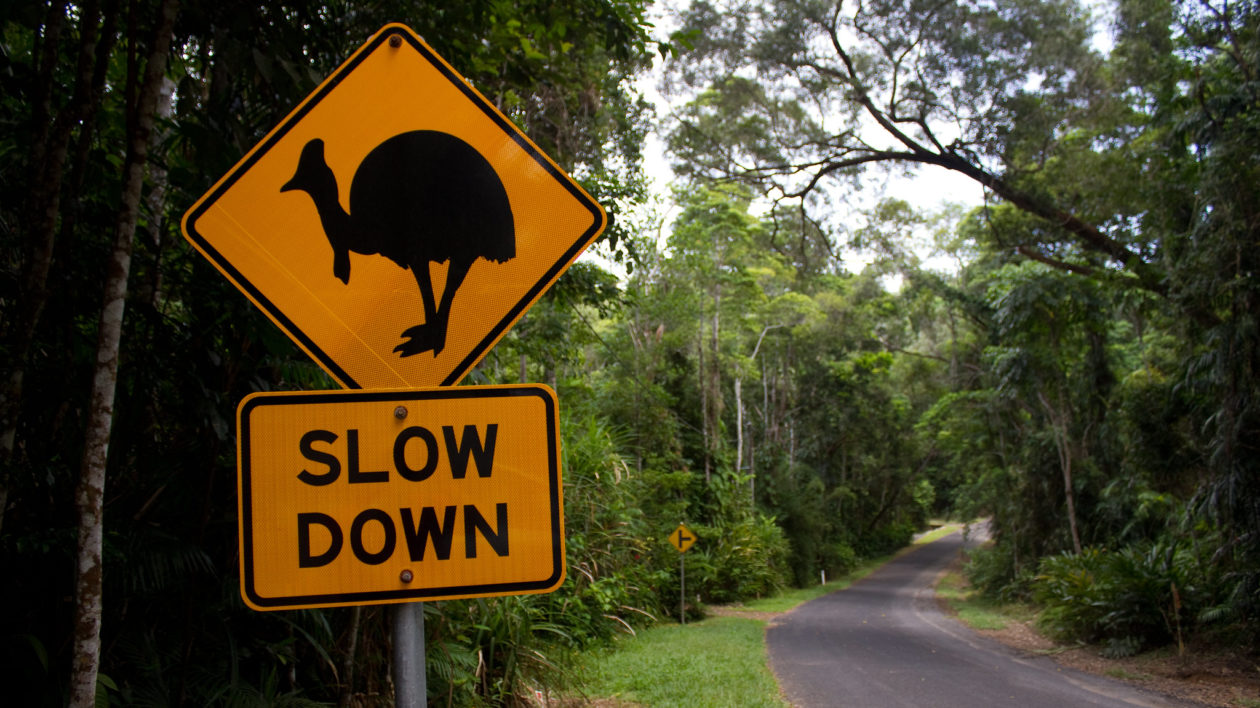
The Threat of Empty Forests
Cassowaries aren’t the only seed-dispersing species under threat. In the African Congo, several tree species depend upon endangered forest elephants to disperse their seeds. Palm civets are famous for their role as seed dispersers, which humans have co-opted to produce a luxury coffee brewed from civet-ingested beans. And in Southeast Asia, research shows that smaller mammals, like tapir, can’t replicate seed-dispersal services on the same scale as elephants or rhinoceros.
Even more familiar omnivores, like bear and coyote, play an important role in maintaining plant diversity.
Seed dispersers are also critical to shoring up forest resilience in the face of other threats, like climate change. But that same threat will impact animals, too. In Australia, scientists predict that climate change will reduce the seed dispersal services of frugivores — including cassowaries, bats, and arboreal mammals — which in turn will make it harder for fruiting plants to shift their ranges in response to climate change.
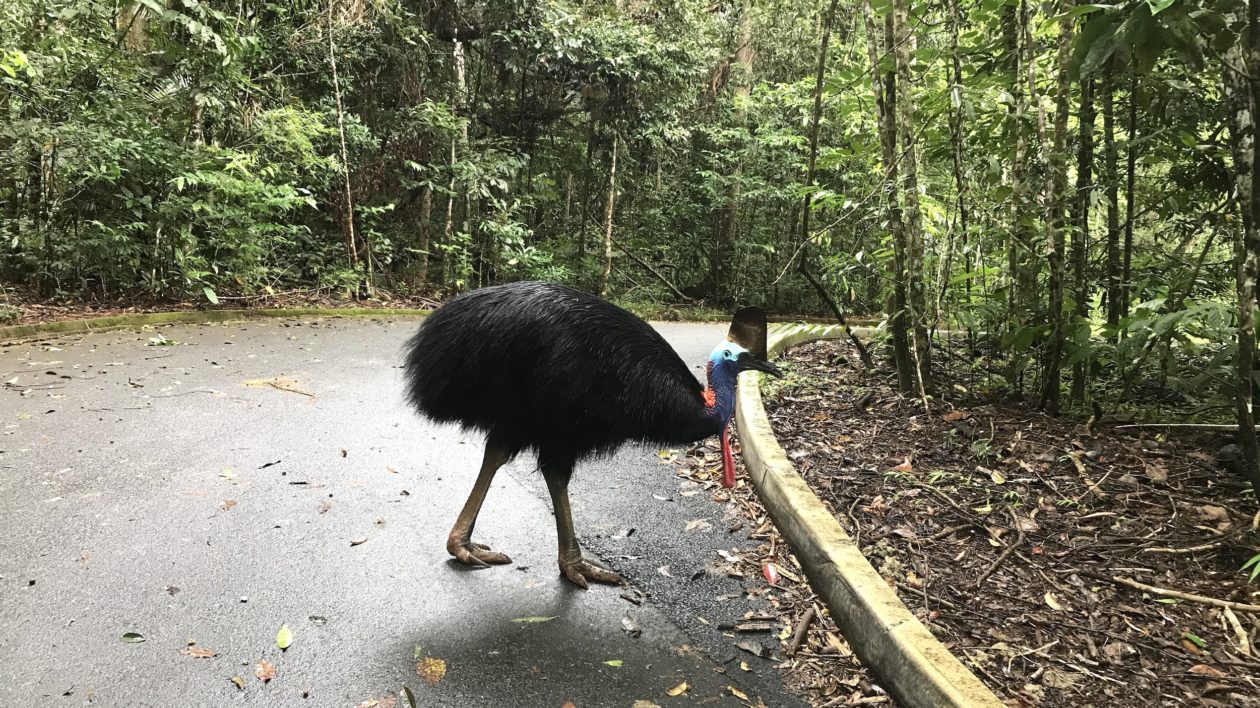
Despite the plethora of poo on our hike, we didn’t see a cassowary. But a week later I got lucky… in a parking lot.
I was taking off my hiking boots next to the car when the bird emerged from the wall of vegetation. I froze, watching with open-mouthed fascination as she bent down with each step, carefully plucking single fruits from the pavement and then flicking her head back to gulp them down. Step, pluck, gulp, repeat.
I followed her around the parking lot, like wildlife paparazzi, as she padded over to a cluster of cassowary plum fruits: oval, blueberry colored, each the size of a large orange. Bending down, the cassowary grabbed a plum, deftly repositioned it tapered-end-first in her beak, and then knocked it back like a shot of liquor. I could see the bulge of the fruit move down the bird’s neck, like a high-speed python swallowing a possum.
As if on cue, the cassowary pooped, splattering fruity mush in the center of a parking space. Seed dispersal at work! And then she plodded back into the forest without a sound, completely invisible within seconds.
Despite all the hype about killer birds, cassowaries have far more to fear from humans than we do from them.
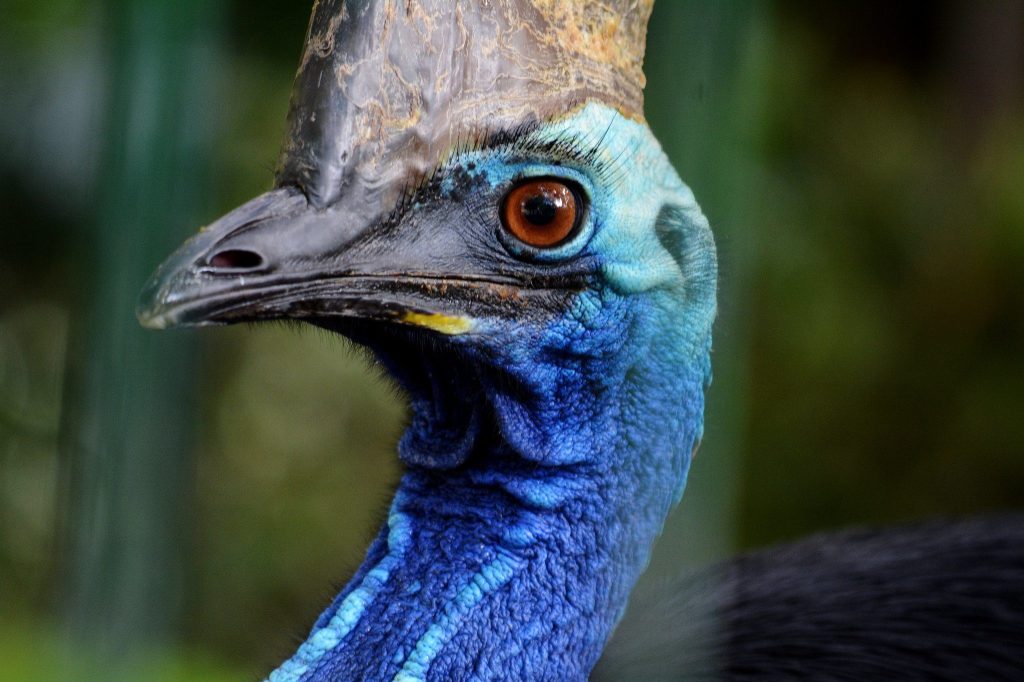



Crazy article at times but very informative and true.
Yo great article, what is ‘Mr sullivan’ on about tho. ‘So mesmerized by our own overthinking’, yeah that’s definitely true, LMAO. Someone has too much time on their hands to be delving into divisive powers and monotheist religions under an article on Cassowary conservation.
i too find the superior life-form Southern Cassowary highly informative- particularly in light of any materialists intuiting that Gaia is no match for its own spawn. is that our concern, Mr Marchiano…? maybe there’s more evolution going on than meets capitalism’s academically-entrained eye. everything dies- even redwood sempervirens . yet here we are! paradoxes paying for war; and so mesmerized by our own over-thinking we despair of the very carbon which this Ozzy forest- nay all life- transpires. human silliness begins and ends in kindness to ourselves. when do we get to ask if pressing our societies’ pattern of toxic beliefs onto a phenomenologic environment is the source- or a rich result of our era’s fear of change? the future is ours to fear or befriend. so when did we decide we could ‘escape’ nature- was it in the apple of a monotheist religion? i suggest ‘knowledge’ is more appropriate when we’re curious about the authority and historic associations of any alienated, alienating and divisive powers proclaiming knowledge of any such escape
A really great and informative article. As a non-Australian, this was especially enjoyable to learn about a species I have heard of but knew little about. Your article points out a sad thread that is now worldwide, the slow reduction (Extinction) of so many plants and animals at the hands of mans desire to control the environment for his own wealth, or desires. At some point, we will be the cause of life on this planet ending unless the planet and its minions are able to evolve enough “pandemics” to limit our overpopulating, pollution, destruction, and wasteful use of natural resources………….